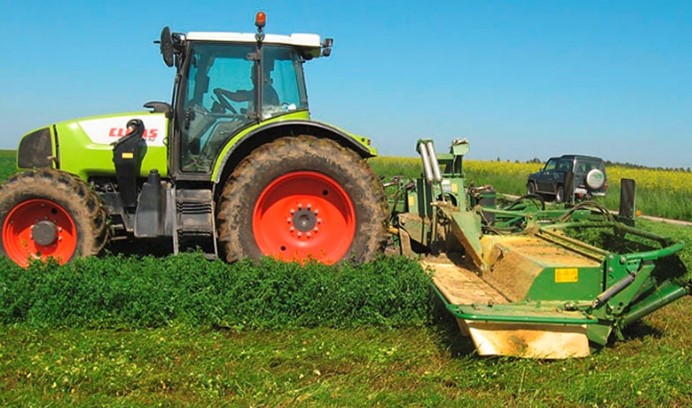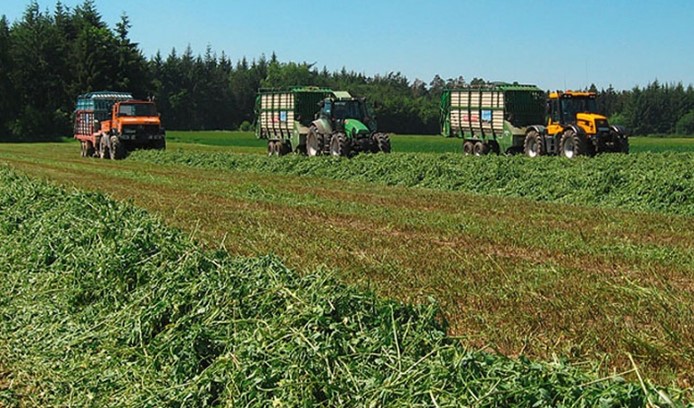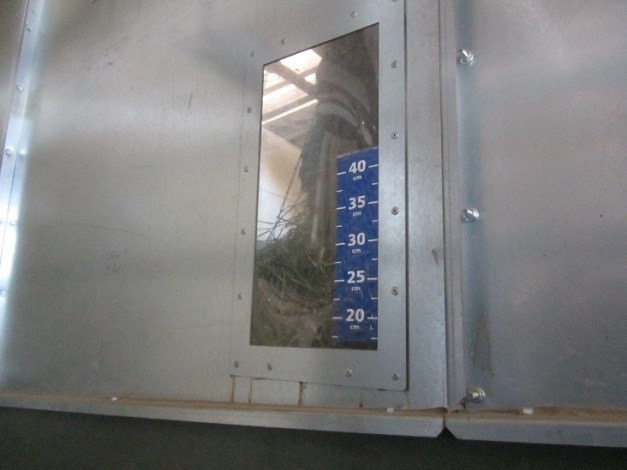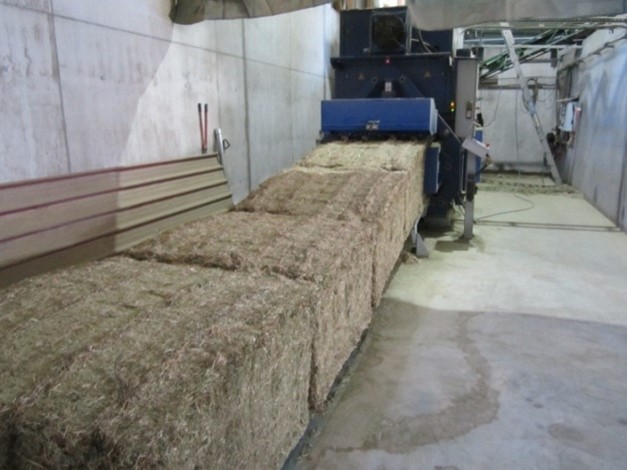Utilisation of waste heat from biogas plants for drying fine-grained legumes
Problem
The combustion of biogas to generate electricity generates a lot of waste heat, which is often not sufficiently used. Fine-grained legumes, such as lucerne or clover, are important in the crop rotation on organic farms. At the same time, they are a good source of proteins, amino acids and roughage in feed. Outdoor-dried hay from fine-grained legumes is a risky business due to the weather. Field drying can lead to very high leaf losses, which greatly reduces the protein and amino acid content. This is why fine-grained leg-umes are mown early (see Fig. 1), brought in moist (see Fig. 2) and then dried on the farm in an energy-intensive way.
Solution
The approach here is to use the waste heat from biogas combustion for the drying of fine-grained legumes. There are different methods for drying the crop. They all use the warm exhaust air, which is sucked in by a fan and fed to the various processes via air ducts. Loose plants can be dried with a continuous dryer or in special drying containers with perforated floors (see Fig. 3). For better and more compact storage, the crop should then be compressed into bales (see Fig. 4). Another option is to press the crop directly in the field, and the bales are then ventilated directly (see Fig. 6). However, the residual moisture in the field must be reduced to a maximum of 20%. The costs for the drying are 8 to 10 € per bale.
Benefits
- Low loss of leaf mass leads to high concentration of protein and amino acids.
- A fast harvest reduces the dependence on the weather.
- Waste heat utilisation of the biogas plant and a possibility for the operator to earn additional income through contract drying.
- Extension of the range of applications for fine-grained legumes in monogastric feed from roughage supplier to protein supplier
Applicability box
Geographical coverage
Use of biogas waste heat to achieve a high concen-tration of ingredients in fine-grained legumes.
Application time
During the vegetation period for hay, in autumn for maize and cereals.
Required time
10 to 20 hours for the crop to pass through the system; the net drying time is 3-6 hours. mowing and recovery time depends on the degree of used technology.
Period of impact
Permanent
Equipment
Harvesting machines for grassland, continuous dry-er, bale drying blower, baling press
Best in
mostly used for ruminant feeding, but can now also be used for monogastric feeding due to higher nu-trient concentrations
Practical Recommendations
Continuous dryer
- The legumes must be mown early. Then they are chopped with knives in the loader wagon (length 3.5 cm).
- As a rule, it is left to dry in the field for one day before being loaded onto wagons. Depending on the weather, two days are also possible to reduce moisture content from 50% to 33%.
- A large loader wagon (see Fig. 2) is always delivered full, which corresponds to one hectare depending on the yield.
- The drying temperature for clover is 79°C on average. The hay runs through the system in 10 to 20 hours, depending on the humidity. The actual residence time in the dryer is 3 to 6 hours.
- The dried clover is baled under high pressure into large square bales weighing around 300 kg (see Fig. 4).
- Instead of using a bale press, the dried hay can be pelleted.
Bale drying
- The fine-grained legumes are mown at the beginning of flowering.
- As long as the crop is still green, it is turned twice on the field.
- In the evening, the hay is rowed. At noon of the following day, the crop is rowed for baling.
- In the afternoon, it is baled. Residual moisture should be between 16-20% and no higher than 22%
- The bales are dried at 40°C for 20 to 24 hours. They must be turned once.
Recommendations for both procedures:
- The dried bales can now be stored and fed directly
- For feeding monogastric animals, the dried legumes should be ground in a mobile grinding and mixing plant (see Fig. 5) and mixed homogeneously into the ration.
Further information
Video- Take a look at the video about the Alvan Blanch conveyor drier.
- Check the Organic Farm Knowledge platform for more practical recommendations.
- Alvan Blanch: Multi-Purpose drying ovens (in German)
About this practice abstract and OK-Net EcoFeed
Publishers:Bioland Beratung GmbH,
DE55116Mainz,
Phone +49 6131 23976-28,
www.bioland.de,
IFOAM Organics Europe,
BE1000Brussels,
Phone +32 2 280 12 23,
www.organicseurope.bio,
www.organicseurope.bioResearch Institute of Organic Agriculture (FiBL),
CH5070Frick,
Phone +41 62 865 72 72,
info.suisse@fibl.org,
www.fibl.org
Review: Lindsay Whitstance, Helga Willer
Contact: elias.schmelzer@bioland.de
Permalink: https://organic-farmknowledge.org/tool/37511
https://orgprints.org/view/projects/OKNetEcoFeed.html
This practice abstract was elaborated in the Organic Knowledge Network on Monogastric Animal Feed project. The project is running from January 2018 to December 2020. The overall aim of OKNet EcoFeed is to help farmers, breeders and the organic feed processing industry in achieving the goal of 100% use of organic and regional feed for monogastrics.
Project website: https://ok-net-ecofeed.eu/
IFOAM Organics Europe (project coordinator), BE; Aarhus University (ICROFS), DK; Organic Research Centre (ORC), UK; Institut Technique de l'Agriculture Biologique (ITAB), FR; Research Institute of Organic Agriculture (FiBL), CH; Bioland, DE; Associazione Italiana perl'Agricoltura Biologica (AIAB), IT; Donau Soja DS, AT; Swedish University of Agricultural Sciences, SE; ECOVALIA, ES; Soil Association, UK.
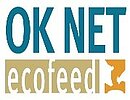


This project has received funding from the European Union’s Horizon 2020 research and innovation programme under grant agreement No 773911. This communication only reflects the author’s view. The Research Executive Agency is not responsible for any use that may be made of the information provided. The authors and editors do not assume responsibility or liability for any possible factual inaccuracies or damage resulting from the application of the recommendations in this practice abstract
